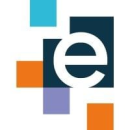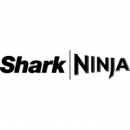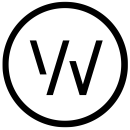Ask a handful of product managers to describe the nature of a fruitful collaboration with engineering teams and you’re sure to hear the phrase “constant communication.” While virtually all cross-functional team efforts are going to require communication, a product manager’s relationship with their engineering counterparts necessitates an ongoing and open dialogue.
“You literally cannot over-communicate,” John Trigg, director, product management, for Workhuman, recommends check-ins as often as possible with the individual engineers or engineering managers involved in a project. “And it doesn’t always need to be formal. With all of the instant messaging tools available, there is no reason not to be able to share updates, questions and statuses.”
For Meghan Gagne, head of product for Silvertree, the role of the product manager is to articulate requirements based on a client’s needs and strategic goals. But it’s not enough to pass full-fledged requirements on to an engineering team as if it were an assignment coming down a pipeline.
“The most successful relationships arise when both sides continue the partnership through the entirety of product development,” Gagne said. “When engineering understands ‘the why’ of every decision, and product understands ‘the how,’ the team is set up for success.”
Built In Boston asked seven product managers for insights into collaborating with engineering teams. Read on for more.

Servicing the growing population of more than 55 million Americans aged 65 or older, Silvertree is creating a wellness wearable platform for older adults.
As a product manager, what are the key ingredients for a successful relationship with your engineering team?
At its core, product management is responsible for outlining the requirements based on the voice of the customer and the strategic direction of the market — then bringing that to engineering to select the technology best suited for a commercially viable and executable product. If the market needs surpass the technical capabilities available, then the outcome will be an unsuccessful, over-budget project. To ensure success, business and engineering expertise must intertwine responsibilities in this conceptual phase of product development.
However, as product managers, simply handing over the blueprints is not enough. Each side operates two-flight levels down — deep enough to understand the justification of the others’ decision but not so deep that they are stepping on the toes of the subject matter experts.
Mutual trust and respect is how product and engineering are able to be organizationally separated but successfully attached.”
Describe how Silvertree’s product and engineering teams intersect.
Our product and engineering teams are organizationally separated but operationally attached. Both functions participate in all of the traditional Agile ceremonies, building constant touch-points and opportunities to strengthen relationships. This framework allows for quick feedback loops, which has been instrumental to our success. When discussions around a proposed design change can happen with the entire team in less than 24 hours, pivots become less costly to morale and schedule.
The most productive checks and balances occur when product and engineering are able to discuss the respective justification or concerns for a change. At Silvertree, we’ve informally designed a system that promotes these time-boxed discussions — with an accepted understanding that when time is called, it is the subject matter expert’s responsibility to make the final call. That mutual trust and respect is how product and engineering are able to be organizationally separated but successfully attached.
What communication strategies do you use to ensure engineers share your product vision?
One of our key roles in product management is to educate the engineering team on the customer. Clear and concise communication with tangible examples is a great way to ensure the vision of the customer is not altered by an individual’s personal bias or assumption.
Persona creation is an incredibly valuable tool to create a focal point for all design and development decisions. In early stages of development, it supports empathy and understanding for the customer. It also acts as a critical point of reference in later stages of development when possible edge cases are often discussed. Ultimately, when the persona feels real to the team, it pulls every design conversation out of the technical possibilities and grounds it in the customer’s needs.

Toast’s restaurant point of sale and management platform helps restaurants improve operations, increase sales and create a better guest experience.
As a product manager, what are the key ingredients for a successful relationship with your engineering team?
The most important key ingredient is trust. Trust allows for strong collaboration, as we appreciate each other’s expertise and perspective. It’s much easier to find resolution and compromises when you trust that the other person has the same goals in mind — even if the approach is different. Trust enables a level of independence from each other, too, because we can assume the other person will complete their responsibilities competently.
Curiosity is also important. The engineers at Toast all exhibit a product mindset and constructively engage with my team’s strategy and roadmap. They aren’t afraid to ask the whys and the whats. Through this questioning, the roadmap gets refined into something that is superior to what we could come up with alone. Similarly, as a non-technical product manager, I always ask our engineers for an “ELI5” — or “explain like I’m five” — if there’s something I don’t understand. I don’t need to learn every technical nuance. But an elementary comprehension of what they’re proposing pays dividends when it comes to prioritizing a roadmap between feature work and technical debt — and gaining empathy if things don’t go exactly as planned.
Describe how your product and engineering teams intersect.
At Toast, the product manager, engineering team lead and product designer form a three-legged stool. One leg can’t make a decision without affecting the other two. The three of us have weekly syncs to talk through progress updates, dependencies and challenges. Additionally, I have weekly one-on-one meetings with my engineering lead to have more focused conversations. I particularly enjoy more candid unplanned conversations where it’s a free-flow of thoughts and ideas. Not every meeting has to be execution-oriented.
Team processes are co-owned by all members of the team. We have a meeting during every sprint to talk through an existing process that can be improved or a new process that we want to adopt. Anyone can raise a particular topic to discuss, and we’ll have an open period for people to raise questions or considerations related to the proposed process ahead of the meeting. During the meeting, we answer each question and then talk through how we can implement process improvements or new processes. No one wants to simply be told how to do their job. A well-functioning team should be able to decide how to move forward together and constantly refine it in the midst of new challenges.
I always ask our engineers for an ‘ELI5’ — or ‘explain like I’m five’ — if there’s something I don’t understand.”
What communication strategies do you use to ensure engineers share your product vision?
As a product manager, I think it’s really easy to get caught up in meetings with external stakeholders and endless documentation to a point where you get isolated from the rest of the team. There’s a real fear in sharing unpolished ideas and documents with engineering. However, if we wait until everything is “complete” prior to sharing with engineering, then to me that’s not collaboration; it’s more similar to throwing requirements over the wall.
I like to communicate things as early as possible, and bring the team along for each iteration of product strategy and vision, inviting them to bring their own perspectives as inputs. I share insights from customer calls in relation to both the pain points they shared and how our work has positively impacted their lives. The pain points help to inspire confidence in the product vision, while the wins help to confirm the product vision and prove that we’re on the right path.
3Play Media is a video accessibility company providing captioning, transcription, translation and audio description services at scale to customers in higher education, media and entertainment, enterprise and government.
As a product manager, what are the key ingredients for a successful relationship with your engineering team?
Communication. Through communication, we are constantly collaborating on creative solution requirements for feature requests and bug fixes. We hold regular sprint and quarterly retrospectives to discuss what went well, what could have gone better and what we learned.
We make sure to share and recognize achievements within our team across the entire product and engineering organization, and we take ownership on areas for improvement.
Describe how 3Play Media’s product and engineering teams intersect.
We have a dedicated product manager for each engineering team. Each engineering team then has a tech lead or manager as the point person for each product manager.
This structure helps align priorities between each product and engineering team with common goals and allows teams to create and adapt the processes that work best. This partnership also provides a clear escalation path if sprint interruptions arise.
We make sure to share and recognize achievements within our team across the entire product and engineering organization.”
What communication strategies do you use to ensure engineers share your product vision?
First, I get buy-in. Whether it is brainstorming solutions for roadmap candidates or addressing small bugs, it is critical that the engineers understand how this work is adding value and contributing to company goals.
Second, I get the team involved in product decisions. This ranges from requirements review and scoping activities to sprint planning. Collaborating on different ways to address a problem while understanding different points of view helps ensure we’re working efficiently.
Third, I always have time to provide feedback or ask questions through regular touch points throughout the week. We have daily syncs to provide status updates and confirm next steps as well as sprint ceremonies. We have team- and project-specific Slack channels to provide visibility, ask in-the-moment questions, get updates and call attention to potential roadblocks on a current task.
A healthtech company working toward the goal of accelerating medical research and access to life-changing therapies, eClinical Solutions operates a software platform that delivers self-service access to clinical data.
As a product manager, what are the key ingredients for a successful relationship with your engineering team?
Product’s main purpose is to be the link between business and technical requirements and to serve as the voice of the customer. Product managers are responsible for being proactive in creating solutions that address client and industry challenges and help our life sciences clients achieve their business goals. Product management must set expectations with clients and have a true understanding of evolution in the market and how new techniques can be applied.
We work with engineering to articulate the what and why of our customers’ needs. Engineering helps develop the how. The key ingredients to this successful collaboration are frequent and detailed communication, flexibility, trust and creativity.
Describe how eClinical Solutions’ product and engineering teams intersect.
We are fortunate to have a brilliant and dedicated engineering team. They are true partners with product in producing the best solutions possible for our customers and bringing them to market efficiently. We follow an Agile development methodology, which means that we have daily contact between product and engineering teams. It ensures that we are constantly in sync. Though product is ultimately responsible for the comprehension and quality of requirements, we rely extensively on input from our engineering colleagues to guarantee that features are well-defined and deliver the utmost value.
The key ingredients to this successful collaboration are frequent and detailed communication, flexibility, trust and creativity.”
What communication strategies do you use to ensure engineers share your product vision?
Our primary source of communication is our product roadmap. This allows all teams visibility into what we are building and how particular features fit into the overall vision for the platform. We collaborate in a shared product management tool, Productboard, to facilitate planning and have regular meetings with engineering to review. This lets us discuss the roadmap, determine value and effort scoring for features and make sure that we are in alignment on priorities.

A cybersecurity company founded by Israeli intelligence cybersecurity experts, Cybereason employs military grade technology to combat threats to businesses, leveraging cutting-edge machine learning and behavioral analytics capabilities.
As a product manager, what are the key ingredients for a successful relationship with your engineering team?
In my experience, the key ingredients in building such a relationship consist of several factors.
The foremost are communication and context. You want to engage frequently with the engineering team and discuss the features in development, open requests, cases and open issues. Sharing more context on the subject, how it ties to the product vision, the customer pain, feature purpose, business goals and customer feedback is key. This empowers the engineering team, creates mutual respect and helps them understand the desired outcome.
Clear roles and responsibilities are also important. Include each other in both tactical and strategic decisions. Understanding that each function has its own responsibilities is key to building understanding, agreement and respect for each other’s responsibilities.
Customer interaction — establishing meetings with engineering and customers to get direct feedback — benefits engineering in multiple aspects. They see the impact of their work and how it benefits the customer, which ensures a better understanding of the customer and what drives them and their needs.
Understanding that each function has its own responsibilities is key to building understanding, agreement and respect for each other’s responsibilities.”
Describe how Cybereason’s product and engineering teams intersect.
In our organization, each engineering team and product manager are assigned to the same product. They’re aligned on the same vision and objectives. This arrangement benefits the relationship between engineering and product management on all levels.
Each group owns a different section of the broad product offering. This helps align the broader product strategy and vision, reduces the complexity of cross-teams efforts and reduces external pressure on either function. On a team level, this structure creates mutual accountability, helps remove conflicting interests, increases trust and creates a commitment on both sides. Having a similar structure reduces the overall tension in the relationship and helps build a successful one.
What communication strategies do you use to ensure engineers share your product vision?
Our product vision is derived from the company vision; to protect people and information in the new and open connected world, and from our mission to reverse the adversary advantage by empowering defenders with ingenuity and technology to stop cyber threats.
To this end, we hold quarterly product-engineering sessions to review the latest company roadmap, business goals and overall strategy. Those roadmap sessions ensure engineers share the full product vision. We also have constant reinforcement — working together daily; sharing product context and point of view; and focusing on a desired outcome that reflects the product vision.
Workhuman’s Social Recognition® and Continuous Performance Management platform offer HR solutions employed by more than 5 million workers spread across more than 180 countries.
As a product manager, what are the key ingredients for a successful relationship with your engineering team?
Communication. It all relies on you, your team and all of your engineering counterparts having frequent and open communication. You literally cannot over-communicate, and it doesn’t always need to be formal. Having regular check-ins — even just 10 minute scheduled calls with a regular engineering individual or team — leads to continuous understanding. Plus, with all of the instant messaging tools available, there is no reason not to be able to share updates, questions and statuses with your counterparts.
Trust is also a key ingredient. You want team members to know their roles and understand their responsibilities and what they owe to whom and when. I think the model of product as a client of the engineering team leads to poor behaviors. Rather, product and engineering should work together as a team with a set of well understood and agreed upon priorities and shared responsibility.
Collaboration, prioritization and visibility are also key. Your roadmap should include the architectural elements your teams need to consider. It should show how resources and timelines are impacted. It should demonstrate end-to-end thought, not just a feature wish-list.
We ensure that the communication is not product telling engineering what to do.”
Describe how Workhuman’s product and engineering teams intersect.
We work together at various levels. I rely on my counterparts in engineering to manage assignments and status and provide me with real-time updates, tell me what is blocking the team and ensure we all have a line of sight on the upcoming work. This allows us to react to those unanticipated demands — urgent requests, customer or operational situations or reprioritizations — more fluidly and as a unit.
We’re better off being threaded together at different levels. Being aware of the flow of work, both within the whole team and in relation to stakeholders, gives the entire group more awareness of the demands we place on one another.
What communication strategies do you use to ensure engineers share your product vision?
We work to ensure that the engineering team continuously has a line of sight on the roadmap. Having a view of the next thing gives the engineering team visibility into how our work relates to the bigger picture and how our work in the current sprint will evolve and expand. We can also ensure that the roadmap is available to the engineering team in a readily digestible form.
We’ve just switched to Jira Plan to hold our strategic content and definitions. We’re hopeful that it will be useful to the engineering team to see how our current work is rolling up to top-level corporate strategy.
We also ensure that the communication is not product telling engineering what to do. Listening to the engineering team and incorporating work that may not be released as a feature but is critical to ongoing scale, stability, reliability and extensibility is key to our overall success. We take the time to listen to the engineering team and ensure they have a stake in shaping and owning the technical aspects of the roadmap.
SharkNinja is a product development company that designs and manufactures appliances and housewares for the e-commerce market.
As a product manager, what are the key ingredients for a successful relationship with your engineering team?
The engineering product relationship is foundationally about trade-offs and being able to understand and discuss the pros and cons of decisions. If the relationship becomes one-sided, then it becomes harmful to consumer value. I have always prided myself on building an authentic relationship with my engineering partners to highlight the consumer point of view and how our engineering solutions support driving a five-star consumer experience.
Describe how SharkNinja’s product and engineering teams intersect.
The product team drives the vision of the product, and the engineering team lays out the best possible path to achieve that vision. Being able to discuss and evolve that vision based on consumer feedback and design trade-offs allows both product and engineering to work in lock step to build the optimal working relationship. Ultimately, this leads to the best possible product.
The engineering product relationship is foundationally about trade-offs and being able to understand and discuss the pros and cons of decisions.”
What communication strategies do you use to ensure engineers share your product vision?
The two tools I find the most helpful are key performance indicators and journey mapping. Being able to have a clear target for the engineering team to go after gives them the freedom to think outside the box to achieve it.
Laying out requirements and following a V-model approach provides the framework for successful product development. Coupled with that is laying out how that KPI fits into the vision of how the consumer is to interact and use the product. Being able to show the impact and ROI of the KPI to the consumer drives alignment with the engineering team. Engineering teams do not like to do busy work, so communicating the impact of their work drives them to find the optimal solution.
A wearable device and performance operation company, WHOOP allows its platform’s users to monitor recovery, sleep, training and health.
As a product manager, what are the key ingredients for a successful relationship with your engineering team?
Sharing business context, being transparent about the why for the work your team is taking on and setting clear goals and business objectives. These three ingredients help to convey the tangible impact the team can deliver, and they help rally everyone to solve important problems. Product managers should loop their team into strategy and brainstorming sessions. The team will build a better product as a result of having engineers — and designers — in the room, as it creates space for creativity and autonomy and highlights that all opinions and expertise are vital to the team’s success.
Product managers should also communicate clearly. When writing product requirements, product managers should do their best to “look around corners” — think about failure cases, provide sketches or flow diagrams and ask engineering teams to evaluate the risks. Try not to leave anything open to interpretation. And if there is something ambiguous, don’t be afraid to loop in the team early to talk through it.
Making the effort is also key. Spend time learning about the core services within your team’s discipline and be comfortable asking questions about how things work. When the team is debugging an issue or brainstorming solutions to a problem, you’ll be a more active participant.
I’ve found that being transparent and overly communicative has very few downsides.”
Describe how WHOOP’s product and engineering teams intersect.
At WHOOP, our product and software engineering teams are largely organized to mirror our member’s experience, where teams focus on a specific part of the app or member experience. Each team is composed of the product trio — product, design and software — and this group works very closely with each other. While the product and engineering organizations have their own functional reporting structures, teams work together to solve a problem-space for members and collaborate — often with other teams like marketing, data science, finance and hardware.
Each team is aligned based on their mission, goals and KPIs. These shared items help bind the team together to achieve a common outcome. Additionally, these cross-functional teams sit together when in the office, which fosters more team communication and allows teammates to hear and contribute to lots of conversations.
What communication strategies do you use to ensure engineers share your product vision?
The team works together to define our team mission and brainstorm projects for upcoming quarters, and we revisit this material regularly as part of quarterly planning. Having the whole team involved in defining and brainstorming is really important. Everyone on the team has a unique perspective to bring to the table, and we must ensure that all voices are heard in order to bring out the best ideas.
More tactically, I try to share any and all strategy docs with the team to give them visibility into what I’m working on and thinking about. Even if there isn’t an action for the team, I’ve found that being transparent and overly communicative has very few downsides. Of course, there is such a thing as too much information. So it’s important to welcome and be responsive to the team’s feedback if they find any of the information distracting or unhelpful.


















